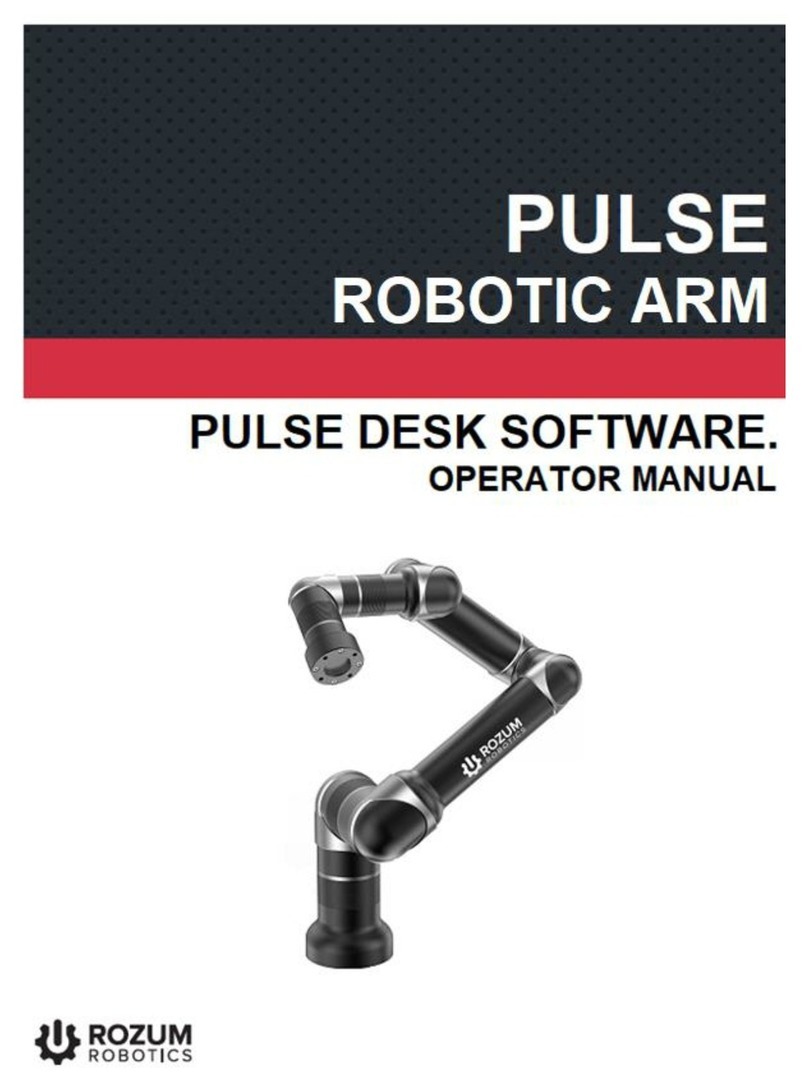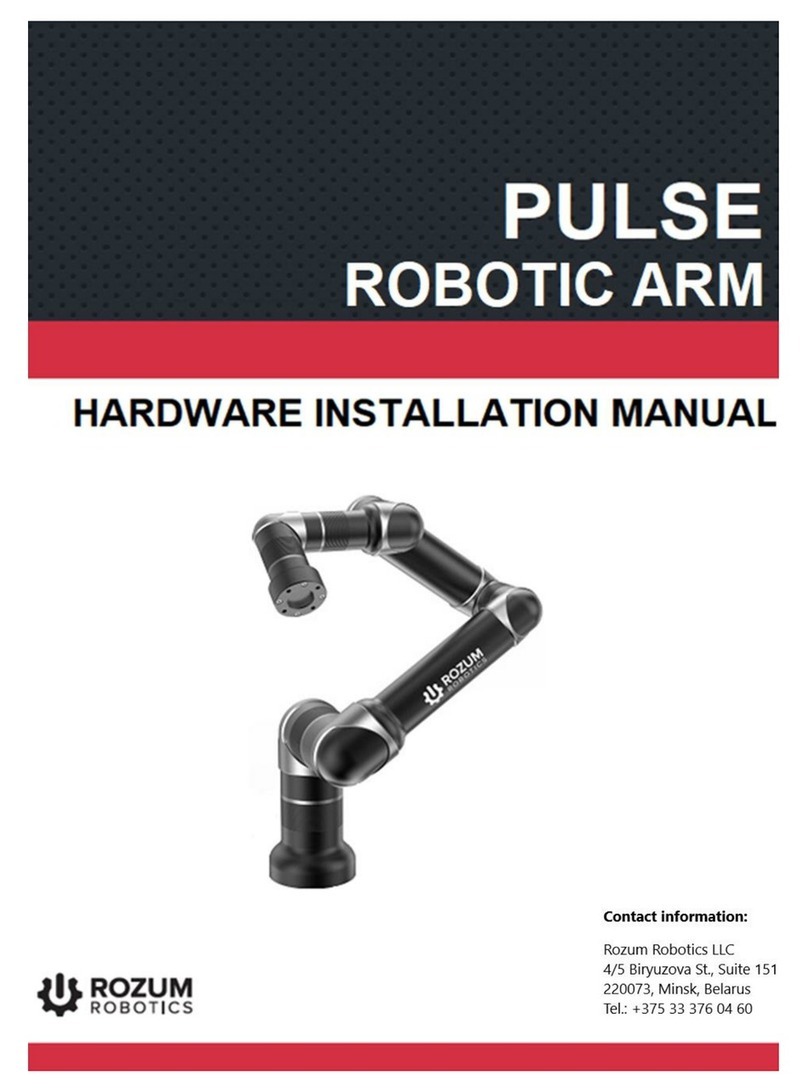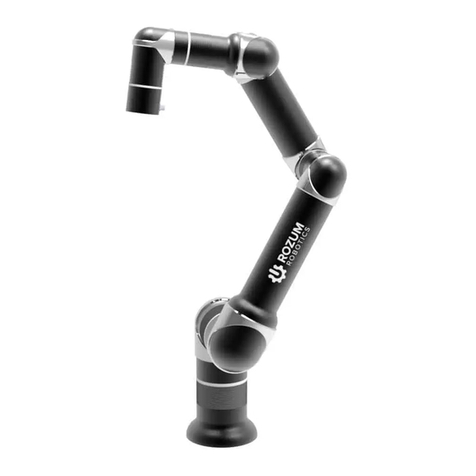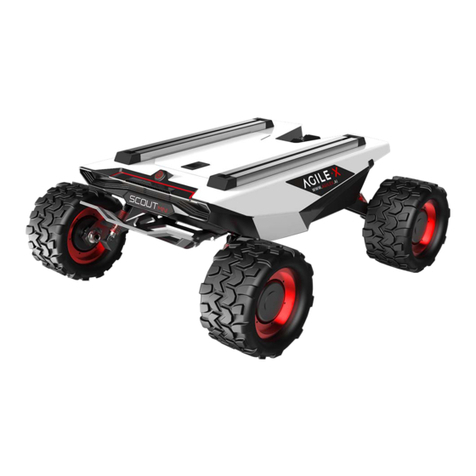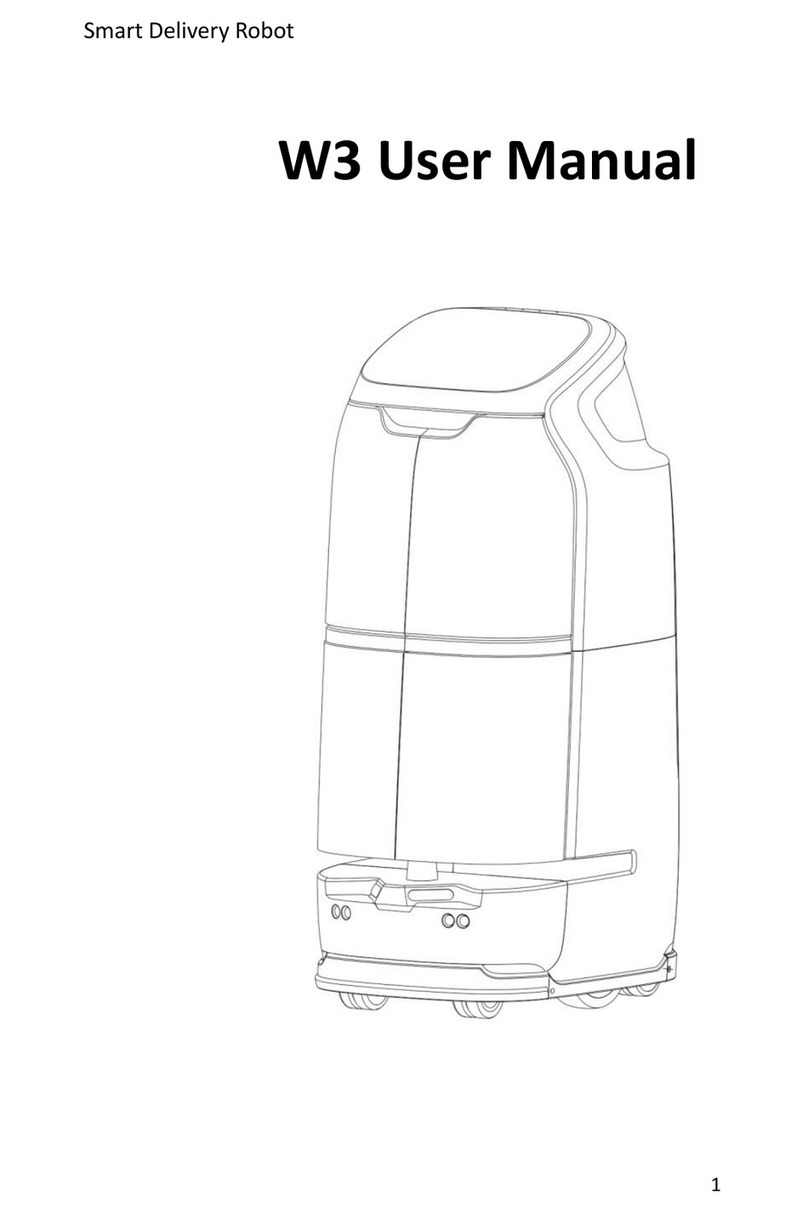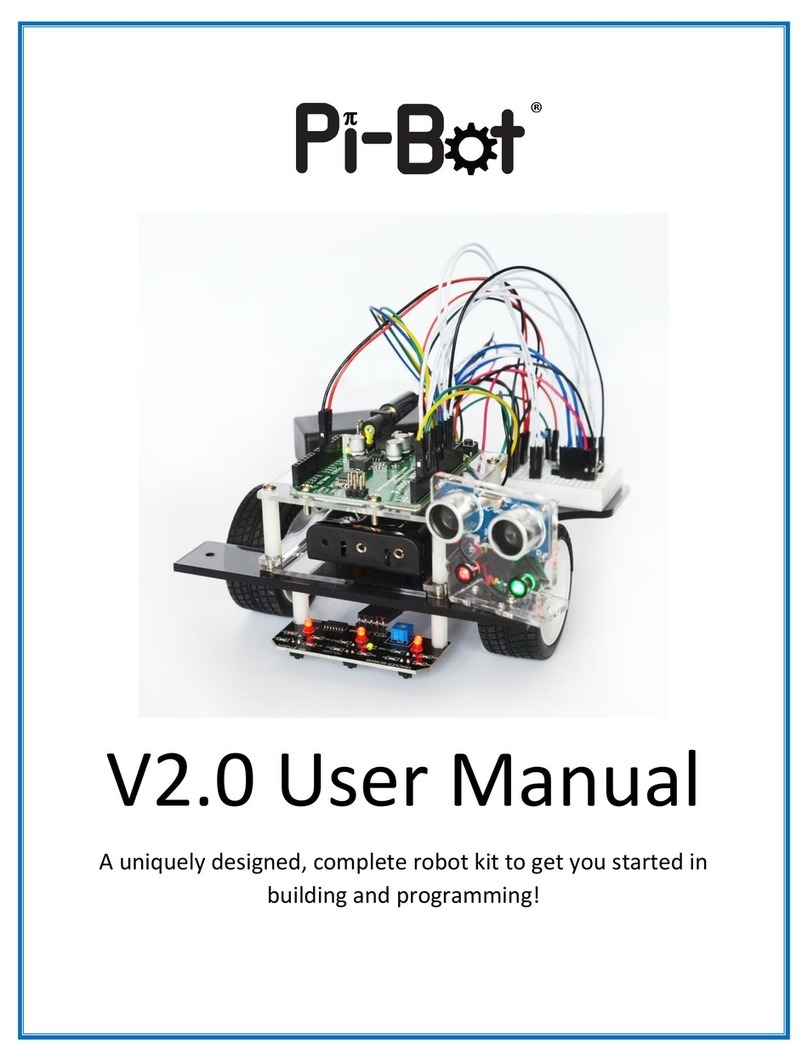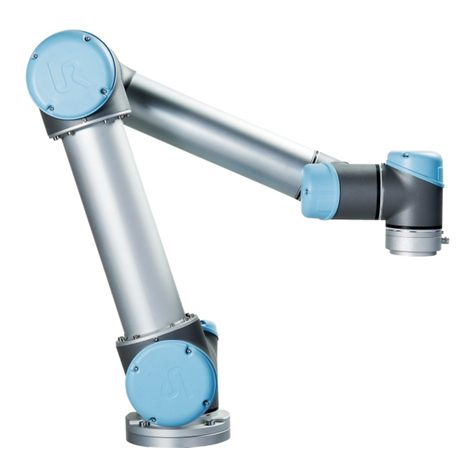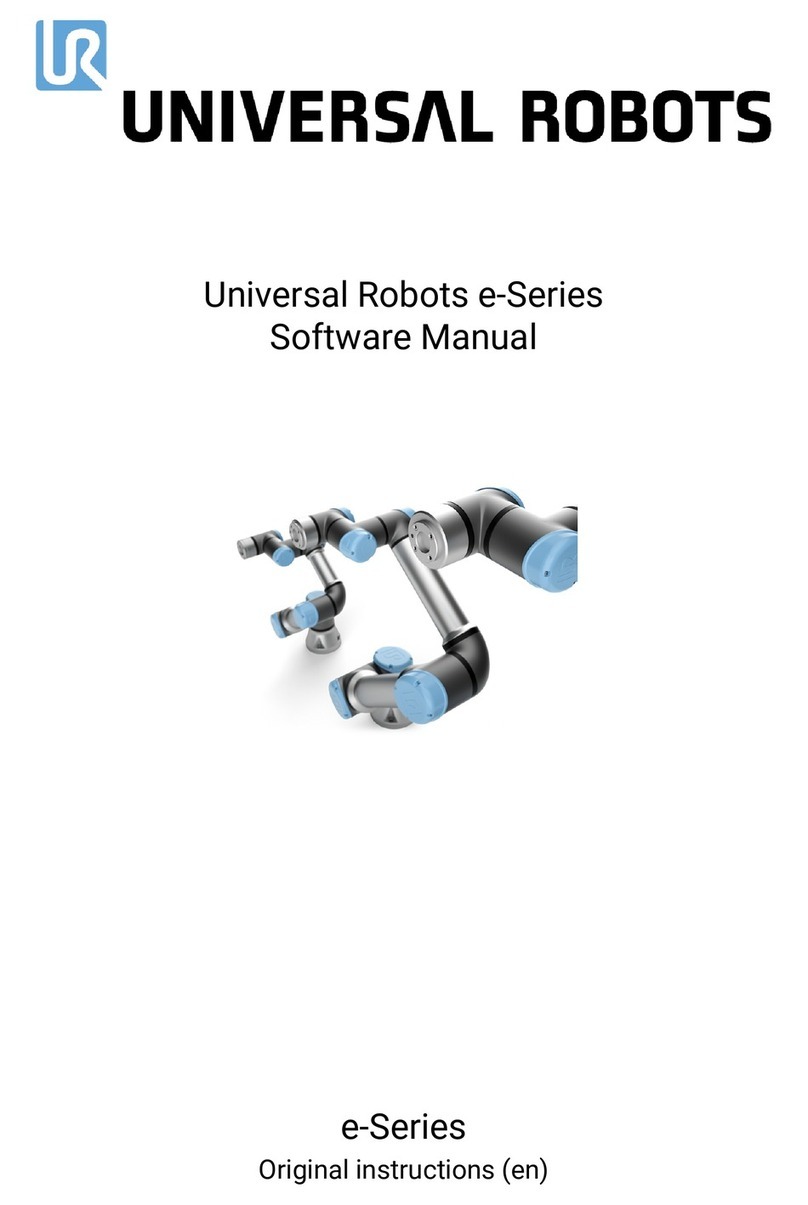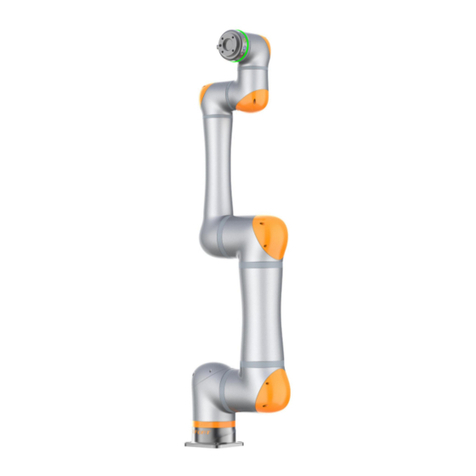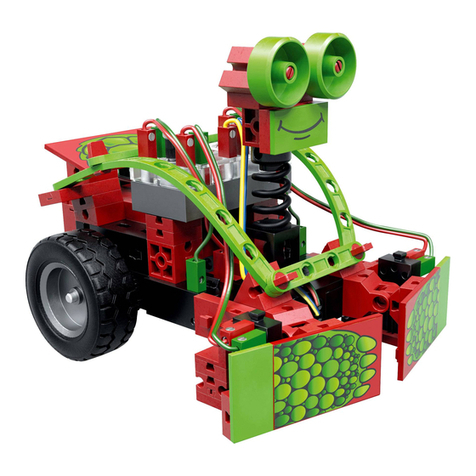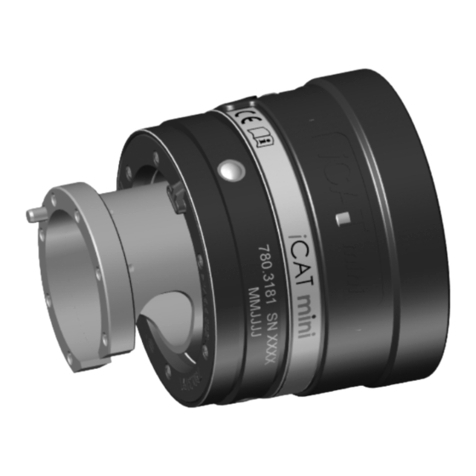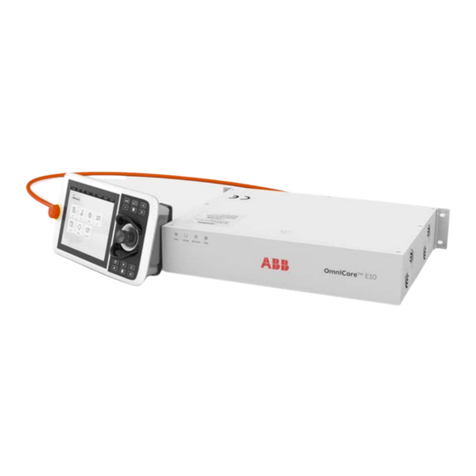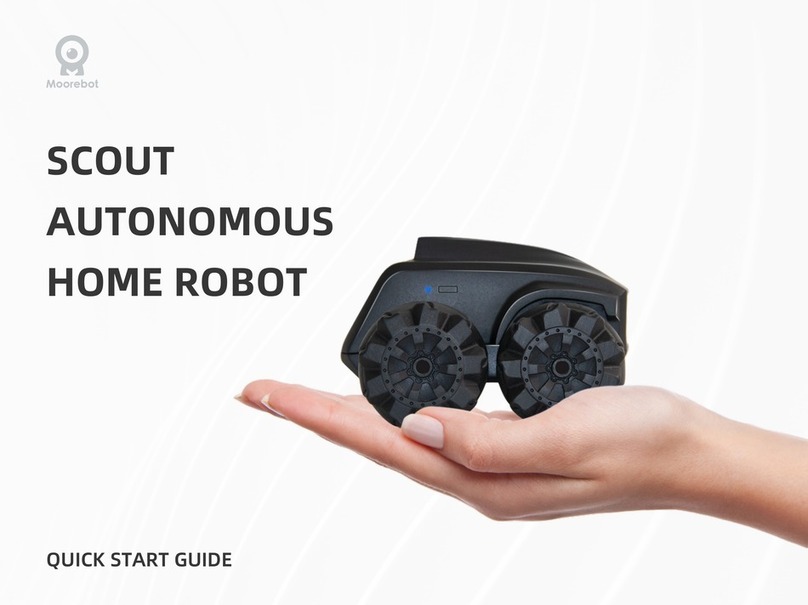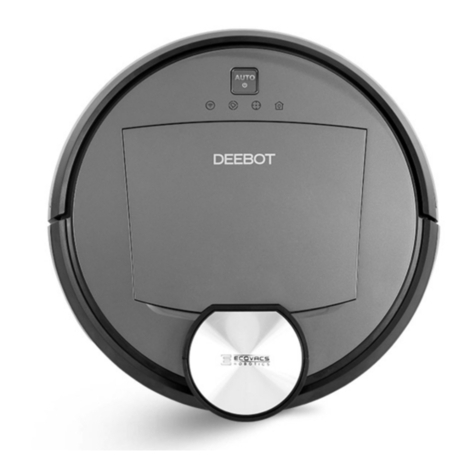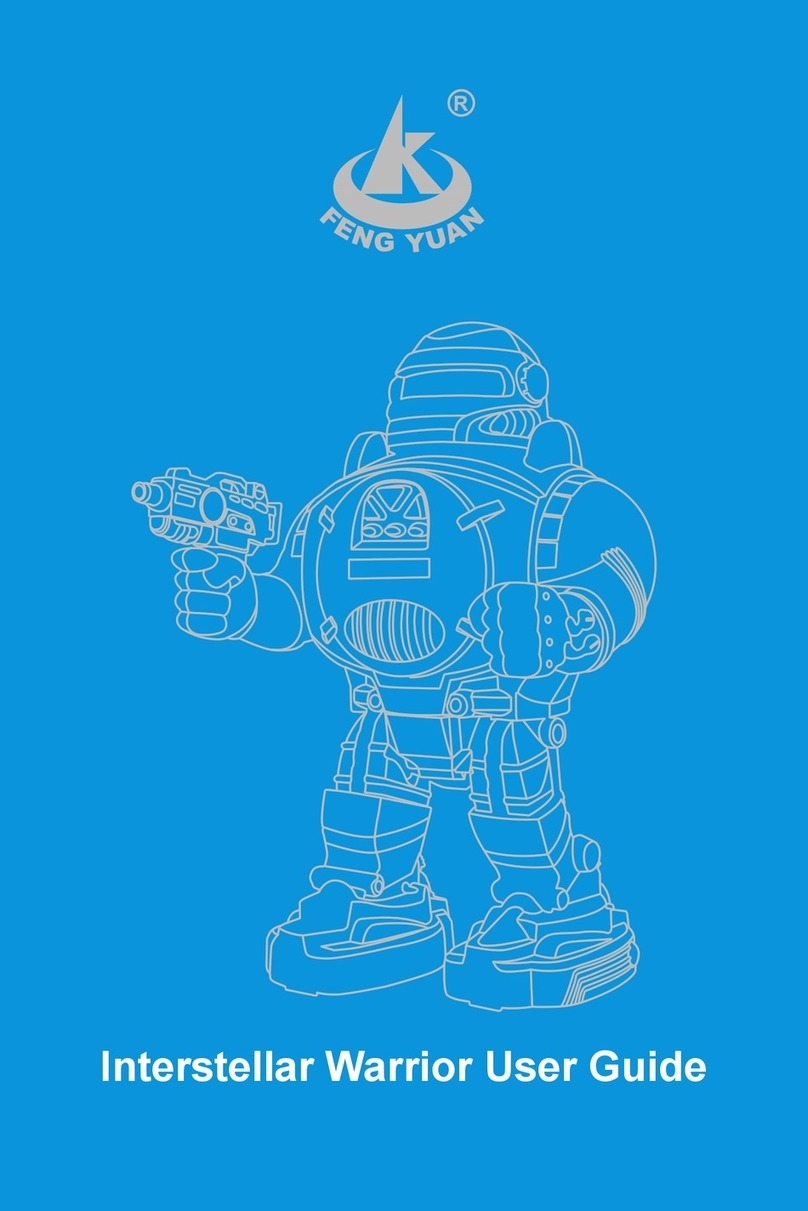TABLE OF CONTENTS
WARNING SIGNS AND THEIR MEANINGS......................................................................... 4
1GENERAL DATA ................................................................................................................ 5
Glossary .................................................................................................................................. 6
2ENABLING ACCESS TO API............................................................................................ 8
3DESCRIPTION OF API FUNCTIONS.............................................................................. 9
3.1 Requests to get parameters and states of the arm (GET)........................................... 9
3.1.1 Getting the actual arm position................................................................................. 9
3.1.2 Getting the actual motion status.............................................................................. 10
3.1.3 Getting the actual status of servo motors................................................................ 11
3.1.4 Getting the actual arm pose..................................................................................... 12
3.1.5 Getting actual tool properties.................................................................................. 13
3.1.6 Getting the actual tool shape................................................................................... 14
3.1.7 Getting the actual position of the arm base............................................................. 15
3.1.8 Getting the arm ID .................................................................................................. 16
3.1.9 Getting the signal level on a digital output............................................................. 16
3.1.10 Getting the signal level on a digital input............................................................... 17
3.1.11 Getting data about obstacles in an arm environment.............................................. 18
3.1.12 Getting data about a specific obstacle in the arm environment.............................. 21
3.1.13 Getting the hardware versions of the arm components........................................... 24
3.1.14 Getting the software versions of the arm components............................................ 24
3.1.15 Getting the arm version........................................................................................... 25
3.2 Requests to set parameters, states, and actions (PUT, POST)................................. 26
3.2.1 Setting a new arm position...................................................................................... 26
3.2.2 Setting a new arm pose........................................................................................... 28
3.2.3 Asking the arm to open the gripper......................................................................... 29
3.2.4 Asking the arm to close the gripper........................................................................ 30
3.2.5 Asking the arm to relax........................................................................................... 31
3.2.6 Asking the arm to go to the freeze state.................................................................. 31
3.2.7 Asking the arm to move to a pose........................................................................... 32
3.2.8 Asking the arm to move to a position..................................................................... 34
3.2.9 Setting high signal level on a digital output............................................................ 36

